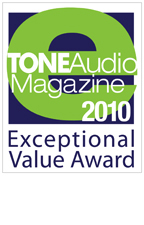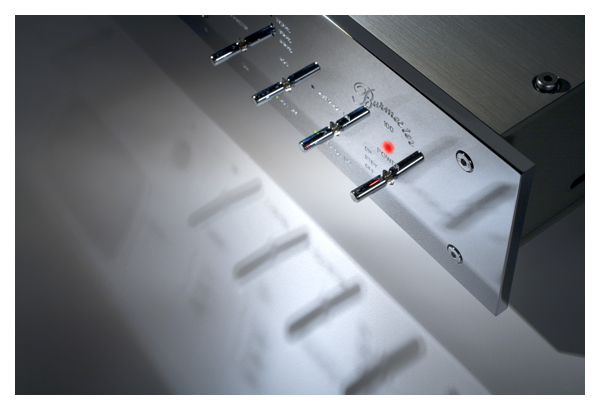 It’s been a long time since Burmester has produced a phono stage. Their last model, the 838, was produced in the 80’s. However, with vinyl making such a comeback, Dieter Burmester felt the time was right to build a phono stage that was worthy of his current Reference Line components. And in typical Burmester fashion, it addresses every aspect of the analog domain – it can even be ordered with a studio quality ADC (analog to digital converter) on board, so that any vinyl enthusiast migrating to the high quality digital world has all of their bases covered.
It’s been a long time since Burmester has produced a phono stage. Their last model, the 838, was produced in the 80’s. However, with vinyl making such a comeback, Dieter Burmester felt the time was right to build a phono stage that was worthy of his current Reference Line components. And in typical Burmester fashion, it addresses every aspect of the analog domain – it can even be ordered with a studio quality ADC (analog to digital converter) on board, so that any vinyl enthusiast migrating to the high quality digital world has all of their bases covered.
Occupying the same amount of rack space as my reference Burmester 011 preamplifier, the sleek casework and mirror finished front panel makes for a perfect aesthetic match. When viewed under studio conditions on a bright white background, you might think the Burmester gear “too shiny,” but when it is in place in your listening room, it mirrors your environment and disappears – a pleasing aesthetic illusion.
Your final configuration determines the price: The 100 Phono outfitted with two phono preamp modules, (sans the ADC and Burmester’s Burlink interface card) has an MSRP of $22,995. The base model with one phono card and no ADC or Burlink specs out at $16,995. This probably isn’t going to be your first phono stage, but it could very well be the last one you will need to purchase – thanks both to Burmester’s legendary build quality and their commitment to product upgrades. Like other products in the Burmester range, the 100 will never become obsolete. Think of it as an investment in your vinyl future.
Ultimate flexibility
The 100 can be configured to your specification with your choice of one or two inputs. Either input can be designated as MM (moving magnet) or MC (moving coil), but once the choice has been made, the 100 must be sent back to your dealer for one of the inputs to be changed. The MM gain can be adjusted in six steps from 37 db to 52 db and the MC stage (also six steps) from 57 db to 73 db, so even the lowest output cartridges can be accommodated. Capacitance can be adjusted on the MM side from 68 pf to 400 pf and MC input loading has six options: 33, 75, 220, 390, 1000 and 47k ohms. MC purists may be put off at the odd choices, but I had no problem using cartridges that I would normally load at 100 ohms with the 75-ohm setting or the 390-ohm setting for cartridges that I would use 500 ohms on another phono preamplifier.
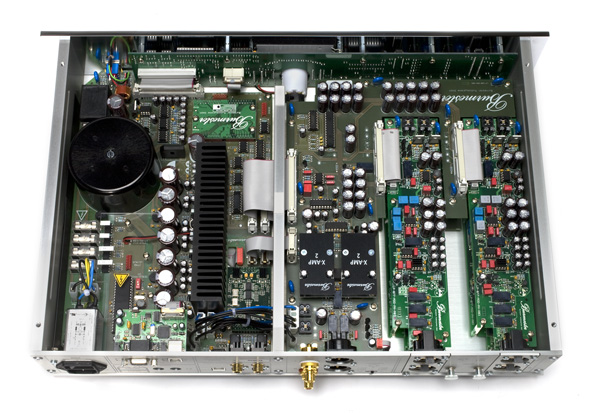 The subsonic filter worked well with a few older, more warped records that have not had a session with the Furutech flattener yet and I was unable to hear any difference in low frequency output. If the wide range of gain settings still isn’t enough, the 100 has the ability to boost the output by an additional 6db, so there should never be a situation where the 100 Phono does not possess enough gain.
The subsonic filter worked well with a few older, more warped records that have not had a session with the Furutech flattener yet and I was unable to hear any difference in low frequency output. If the wide range of gain settings still isn’t enough, the 100 has the ability to boost the output by an additional 6db, so there should never be a situation where the 100 Phono does not possess enough gain.
Burmester’s “auto adjust” feature, when used with the supplied test record, will make up for channel imbalance in your phono cartridge. It compares the left and right channel signals, adjusting the level between channels to .2db, able to make the compensation up to 6db, though I can’t imagine a premium phono cartridge having this much channel error. The only thing missing is a mono switch.
Setup
The Model 100 sounded slightly flat out of the box compared to my other Burmester components that have been powered up for over a year now, but because there are no capacitors in the signal path, there is no long drawn out break in with this preamplifier. It opens up dramatically after a few days of constant play, and after it’s been on for about a week, you’re 100% there. If you don’t have 12 hours a day to spin records, I highly suggest a Hagerman Technologies Reverse-RIAA between your CD player and the 100. Leave it on repeat 24 hours a day for a few days to speed up the process. If you are one of the audiophiles that pooh-poohs component break in/stabilization, play your favorite record on the 100 straight out of the box and then again after a few days of burn in and you will be stunned at the improvement.
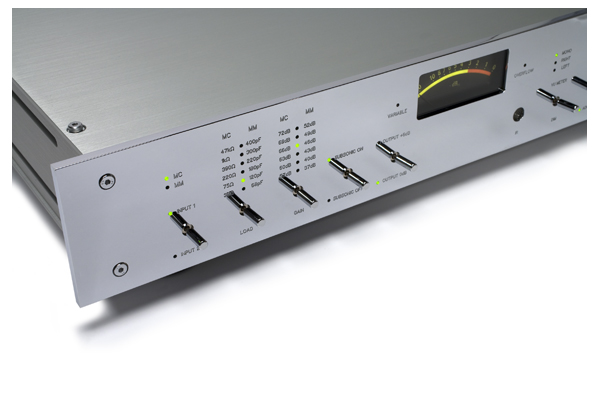 All controls are easily available on the front panel and clearly marked, so finding the proper loading and gain settings for your cartridge couldn’t be easier. If you have multiple turntable/cartridge owners will be instantly at ease with this flexibility that few other phono stages match.
All controls are easily available on the front panel and clearly marked, so finding the proper loading and gain settings for your cartridge couldn’t be easier. If you have multiple turntable/cartridge owners will be instantly at ease with this flexibility that few other phono stages match.
For those incorporating the 100 into a non-Burmester system, there is a phase reversal switch that works with the RCA outputs as well as the balanced XLR outputs. This is particularly important because Burmester uses pin 3 for signal positive and 2 negative, while most other manufacturers do just the opposite. A quick flip of the switch keeps everything in phase.
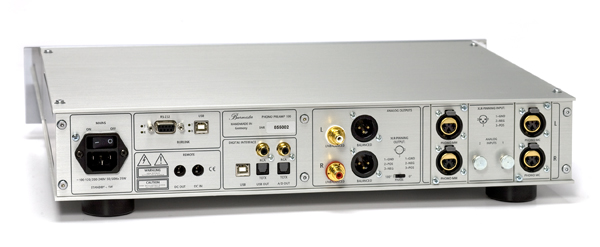 Burmester feels that keeping the signal path balanced all the way through, so the 100 only has balanced inputs. This will require cable retermination or using the supplied XLR to RCA adaptors. Considering the additional benefit to running a phono cartridge balanced, I would highly suggest having your tonearm cable terminated for balanced operation. I used a Cardas Clear Phono cable and the Burmester Silver Balanced Phono Cable ($1,595) The Burmester cable was perhaps a bit too revealing for my taste, but again like any other cable, this is a tone control that needs to be fitted to your taste.
Burmester feels that keeping the signal path balanced all the way through, so the 100 only has balanced inputs. This will require cable retermination or using the supplied XLR to RCA adaptors. Considering the additional benefit to running a phono cartridge balanced, I would highly suggest having your tonearm cable terminated for balanced operation. I used a Cardas Clear Phono cable and the Burmester Silver Balanced Phono Cable ($1,595) The Burmester cable was perhaps a bit too revealing for my taste, but again like any other cable, this is a tone control that needs to be fitted to your taste.
The Sound
Having used Burmester amplification as my reference for almost two years now, I’ve become very familiar with the “Burmester sound” or perhaps lack of it. A year ago, I proclaimed the 911 mk. 3 power amplifier “The best power amplifier I’ve ever heard” and I still feel that way. Dieter Burmester has managed to design and build electronics that bridges the gap between solid-state and vacuum tubes, offering the known advantages of both with the disadvantages of neither.
Burmester electronics have always offered a tonal richness that is usually associated with vacuum tubes, yet has an equal helping of dynamic contrast and weight that normally can only be achieved with the best solid-state gear. If you are an analog lover, it’s much like the difference between hearing a master tape and a great pressing of your favorite record – the tonality has not been altered, but there is an ease, an extra level of naturalness that the record doesn’t have. If you haven’t heard the master tape you don’t know what you are missing, yet once you have, the difference is easy to discern. This is the ease in which Burmester electronics present the music.
Listening to the current Chris Bellman remaster of Van Halen II brought the first major strength of the model 100 to the front – impact. This recording now has a lot more punch, and some serious low-end energy and the model 100 was able to capture every bit of Eddie Van Halen’s guitar harmonics. It was also much easier to hear the differences between Eddie Van Halen and Michael Anthony singing harmonies on “Women In Love.” Most excellent.
Classical and ambient music lovers will appreciate the subtlety of the subsonic filter. When auditioning the vinyl edition of Brian Eno’s Small Craft on a Milk Sea, which features incredibly low synthesizer tones, I was able to play this record considerably louder than I could with the subsonic filter out – yet it never felt like there was any less bass energy on the record. Granted, this is something you probably won’t need often, but a nice feature to have available. In combination with the GamuT S9 speakers and a pair of Burmester 911 mk. 3 amplifiers, I was able to achieve sound pressure levels that you would expect to hear in a club without strain – and without a touch of acoustic feedback.
High frequencies – sublime. Again, when listening to your favorite acoustic music, the speakers just melt into the room and allow you to forget about the gear. Spinning at least half a dozen of the latest Blue Note remasters from Music Matters Jazz I was always taken back at how natural cymbals and drum heads were sounding; always with perfect attack and smooth decay. The true sign of an exceptional piece of gear, the 100 did not favor any particular type of music.
A few things always stand out with the Burmester experience beyond perfect tonality; ultra low noise, massive weight and lightning quick dynamics. The 100 stays true to the rest of my Burmester gear. Spinning the latest ORG pressing of Joni Mitchell’s The Hissing of Summer Lawns and their latest remake of Tom Petty’s Damn the Torpedoes revealed even more detail than I was used to with these two perfect pressings. This ultra quiet background always made for huge dynamic swings on records that had the scale, but also revealed a stunning amount of low-level detail as well. The 100 is one of those rare additions to your system that will offer a further look into recordings you thought you knew intimately.
This realism is further enhanced by the 100’s ability to start and stop instantly. It exhibits lightning fast response during the attack phase of a musical transient, but exhibits no overhang, stopping instantly as well. This contributes to the 100’s complete lack of fatigue when listening for long periods of time.
A few quick comparisons
To keep the playing field level, I captured some tracks at 24/192 files with my Nagra LB pro digital recorder, as I do with the other phono stages I’ve used in the last year. This offered an for an indirect comparison to the ARC REF Phono 2 and the Boulder 1008 to the 100 Phono. While this does not reveal 100% of what each of the respective phono stages can do, it’s a great way to compare phono stages past, without relying on memory alone. When comparing the high res digital samples of Hissing of Summer Lawns, it confirmed what I suspected: The Boulder offered slightly more bass grunt, and my ARC REF Phono 2 had slightly less than the Burmester. When comparing the REF to the Burmester in real time, the Burmester was definitely an order of magnitude quieter – quite possibly the quietest I’ve ever heard.
The order was reversed when listening for that image depth; here the vacuum tubes in the ARC offered a bit larger musical image with the 100 seeming to make the room a bit smaller, with the Boulder now in last place. The 100 exceeded the other two in terms of dynamic contrast and the lowest noise floor. Considering adjustability, ease of use and the thought of never having to search for vacuum tubes, makes the 100 the big winner in my book. Keep in mind that the order of magnitude we are discussing here is very small – indeed much of these differences could be minimized by cartridge choice.
When listening to Andrew Bird’s 2005 release Andrew Bird & The Mysterious Production of Eggs, I was consistently impressed by the low level detail and clarity presented. If you value a wide soundstage where images are painted in a very specific place across that sonic landscape, the Burmester is at the top of this category as well. While I haven’t had the privilege of listening to all of the top $30k – $60k phono stages yet, the Model 100 is at the top of my list in regards to everything else I’ve heard in the 10-25k range. And we still haven’t discussed the ADC…
The deciding factor in choosing the 100 over something else up in the stratosphere of phono stages will boil down to the sound you prefer and synergy with the rest of your components. Of course if you have an all Burmester system, just write the check, it doesn’t get any better or any easier.
And now for something completely digital
If you’ve been curious about high quality digital capture and are either thinking about digitizing some of your favorite LP’s for a music server or just archival purposes, the extra $2,995 spent on the ADC module is a bargain. Capturing files via USB and my MacBook Pro was fairly straightforward, (as I’ve been doing my fair share of this with other tools lately) though the instructions are fairly cryptic. Those completely new to digital capture will probably be lost, so insist that your dealer give you a good run through on this part of the process.
All digital captures taken with the 100 feature 24-bit resolution, with a choice of 48khz, 96khz or 192khz sample rates. Obviously the 24/192 files were of the highest quality, but the 29/96 files were not far behind and the 48 khz files were probably the most impressive, because they still offered excellent playback. Even using the Burmester 088 CD player as a DAC, the difference between these and the original vinyl was minimal.
Though my Nagra LB digital recorder is easier to use and more user friendly than the Burmester, the Burmester offers a significant jump in recording quality. If you have ever thought about adding this functionality to your system, the Burmester does a fantastic job. Unfortunately, you will have to transfer your files somewhere and transcode to 16/44.1, should you want to burn any of these digital files to a CD. Again, I would have liked to see this as an option in the ADC, so as to not have to perform yet another option in the digital domain.
Conclusion
If you only require one phono input and do not possess an all Burmester system, the 100 Phono is probably a bit on the high side of the price spectrum, but it becomes more reasonable (at least as reasonable as a $20,000 + phono stage can be…) as you add the second input and even more so if you make the ADC part of the bargain.
Nervous audiophiles that swap gear gear fairly often may not appreciate what makes the Burmester components such a great long-term value. They are built with the precision of a Porsche engine and placed inside casework that is fitting of the best Swiss watches. If you are someone that desires high quality audio equipment that you will live with for years to come, the Burmester 100 Phono will sound as great in 20 years as it does today. And that, on many levels is its highest value.
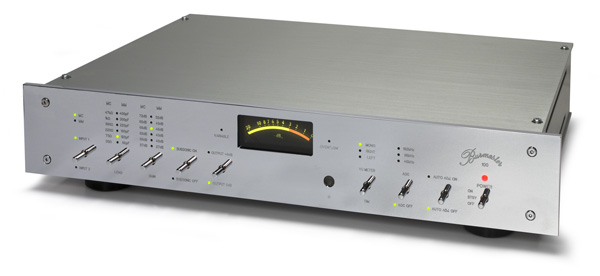
The Burmester 100 Phono
MSRP: $16,995 – $22,995 (depending on configuration)
Manufacturers Information: www.burmester.de
Peripherals
Turntables Spiral Groove SG-2 w/Triplanar, AVID Acutus Reference SP w/SME V, AVID Volvere SP w/SME 309 and Rega P9/RB1000
Cartridges Dynavector XV-1s, Koetsu Urushi Blue, Grado Statement 1, Lyra Skala, SoundSmith Sussurro Paua
Preamplifier Burmester 011, McIntosh C500
Amplifiers Burmester 911mk. 3 monoblocks, McIntosh MC 1.2kw monoblocks
Speakers GamuT S9




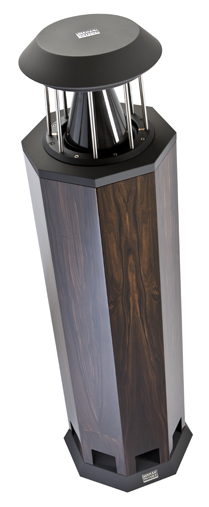 Over the years there has been more than one attempt at an omnidirectional speaker, but I can’t ever really recall one that has worked well, until now. So often we are presented with the dilemma of wanting great sound, but not being able to make the necessary sacrifices to put a pair of speakers where they can provide it. Enter the HRS-120’s. Reminiscent of the 70’s in their standard wood finish, I assure you the sound is completely modern, though those old enough to remember the Ohm Walsh speaker systems will definitely see an outwardly familiar shape. A hexagonal column that stands about 14 inches in diameter and about four feet tall. On top of the HRS-120 is their trademark DDD driver, which uses a titanium element. For more information about the DDD driver, click here:
Over the years there has been more than one attempt at an omnidirectional speaker, but I can’t ever really recall one that has worked well, until now. So often we are presented with the dilemma of wanting great sound, but not being able to make the necessary sacrifices to put a pair of speakers where they can provide it. Enter the HRS-120’s. Reminiscent of the 70’s in their standard wood finish, I assure you the sound is completely modern, though those old enough to remember the Ohm Walsh speaker systems will definitely see an outwardly familiar shape. A hexagonal column that stands about 14 inches in diameter and about four feet tall. On top of the HRS-120 is their trademark DDD driver, which uses a titanium element. For more information about the DDD driver, click here: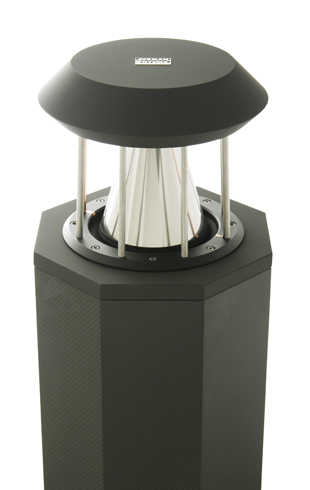 Conclusion
Conclusion It’s been a long time since Burmester has produced a phono stage. Their last model, the 838, was produced in the 80’s. However, with vinyl making such a comeback, Dieter Burmester felt the time was right to build a phono stage that was worthy of his current Reference Line components. And in typical Burmester fashion, it addresses every aspect of the analog domain – it can even be ordered with a studio quality ADC (analog to digital converter) on board, so that any vinyl enthusiast migrating to the high quality digital world has all of their bases covered.
It’s been a long time since Burmester has produced a phono stage. Their last model, the 838, was produced in the 80’s. However, with vinyl making such a comeback, Dieter Burmester felt the time was right to build a phono stage that was worthy of his current Reference Line components. And in typical Burmester fashion, it addresses every aspect of the analog domain – it can even be ordered with a studio quality ADC (analog to digital converter) on board, so that any vinyl enthusiast migrating to the high quality digital world has all of their bases covered. The subsonic filter worked well with a few older, more warped records that have not had a session with the Furutech flattener yet and I was unable to hear any difference in low frequency output. If the wide range of gain settings still isn’t enough, the 100 has the ability to boost the output by an additional 6db, so there should never be a situation where the 100 Phono does not possess enough gain.
The subsonic filter worked well with a few older, more warped records that have not had a session with the Furutech flattener yet and I was unable to hear any difference in low frequency output. If the wide range of gain settings still isn’t enough, the 100 has the ability to boost the output by an additional 6db, so there should never be a situation where the 100 Phono does not possess enough gain. All controls are easily available on the front panel and clearly marked, so finding the proper loading and gain settings for your cartridge couldn’t be easier. If you have multiple turntable/cartridge owners will be instantly at ease with this flexibility that few other phono stages match.
All controls are easily available on the front panel and clearly marked, so finding the proper loading and gain settings for your cartridge couldn’t be easier. If you have multiple turntable/cartridge owners will be instantly at ease with this flexibility that few other phono stages match. Burmester feels that keeping the signal path balanced all the way through, so the 100 only has balanced inputs. This will require cable retermination or using the supplied XLR to RCA adaptors. Considering the additional benefit to running a phono cartridge balanced, I would highly suggest having your tonearm cable terminated for balanced operation. I used a Cardas Clear Phono cable and the Burmester Silver Balanced Phono Cable ($1,595) The Burmester cable was perhaps a bit too revealing for my taste, but again like any other cable, this is a tone control that needs to be fitted to your taste.
Burmester feels that keeping the signal path balanced all the way through, so the 100 only has balanced inputs. This will require cable retermination or using the supplied XLR to RCA adaptors. Considering the additional benefit to running a phono cartridge balanced, I would highly suggest having your tonearm cable terminated for balanced operation. I used a Cardas Clear Phono cable and the Burmester Silver Balanced Phono Cable ($1,595) The Burmester cable was perhaps a bit too revealing for my taste, but again like any other cable, this is a tone control that needs to be fitted to your taste.
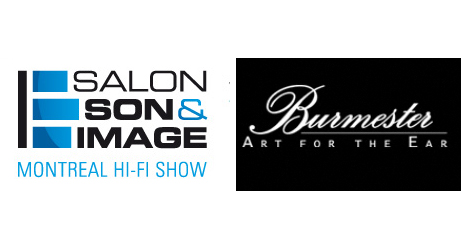 If you are going to be in Montreal, we suggest that you pay a visit to the Salon Son & Image event, and if so, stop in our room and say hello. We always enjoy meeting our readers up close and in person! It is being held at the Hilton Bonaventure in the heart of downtown Montreal. 900 de La Gauchetiere St. West H5A 1E4 514-878-2332
If you are going to be in Montreal, we suggest that you pay a visit to the Salon Son & Image event, and if so, stop in our room and say hello. We always enjoy meeting our readers up close and in person! It is being held at the Hilton Bonaventure in the heart of downtown Montreal. 900 de La Gauchetiere St. West H5A 1E4 514-878-2332 An intimate four-day gathering of psychedelic, avant-garde, heavy, and nearly every other imaginable cutting-edge sonic delight, Roadburn Festival is without peer. Every April, dozens of bands and eager listeners from more than 40 countries descend upon a quaint town in the Netherlands to share in a common love of sensory-absorbing music, underground art, and likeminded discussion. It’s not difficult to understand why.
An intimate four-day gathering of psychedelic, avant-garde, heavy, and nearly every other imaginable cutting-edge sonic delight, Roadburn Festival is without peer. Every April, dozens of bands and eager listeners from more than 40 countries descend upon a quaint town in the Netherlands to share in a common love of sensory-absorbing music, underground art, and likeminded discussion. It’s not difficult to understand why. You’ve been there from the start. Can you share a few favorite memories?
You’ve been there from the start. Can you share a few favorite memories?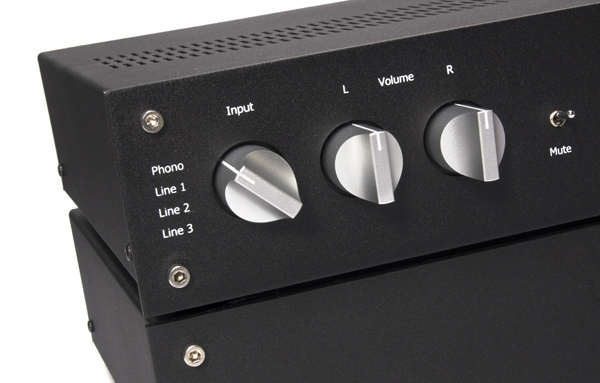 For those of you that have been waiting for the next series of Croft amplification products, they are back with their Micro 25 preamplifier and Series 7 power amplifier. In case you aren’t familiar, don’t feel out of touch, Croft has always been one of the smallest of British hifi manufacturers, but worth seeking out if you are interested in high performance at a very reasonable price. The two components you see here are only $1,395 each.
For those of you that have been waiting for the next series of Croft amplification products, they are back with their Micro 25 preamplifier and Series 7 power amplifier. In case you aren’t familiar, don’t feel out of touch, Croft has always been one of the smallest of British hifi manufacturers, but worth seeking out if you are interested in high performance at a very reasonable price. The two components you see here are only $1,395 each.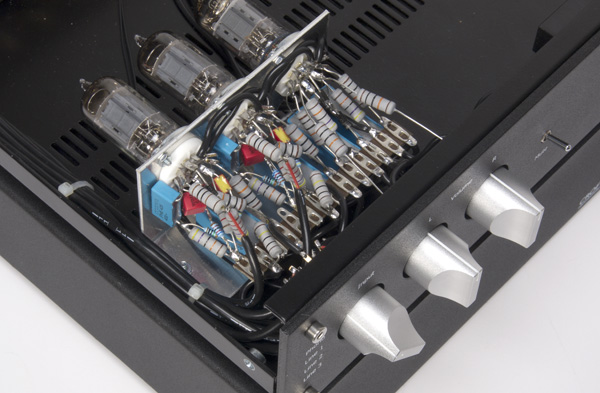
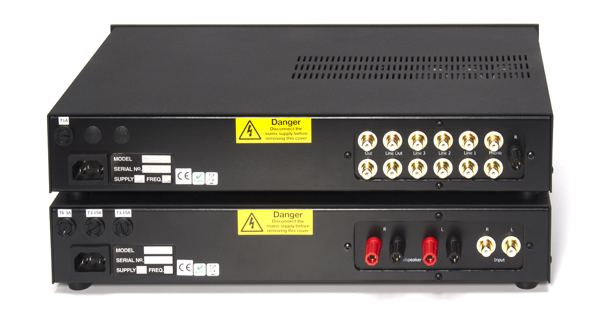
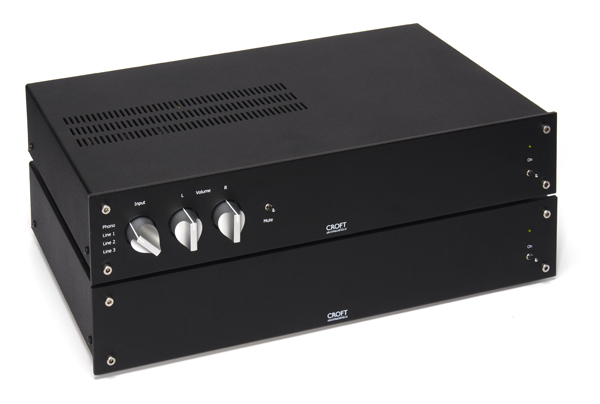
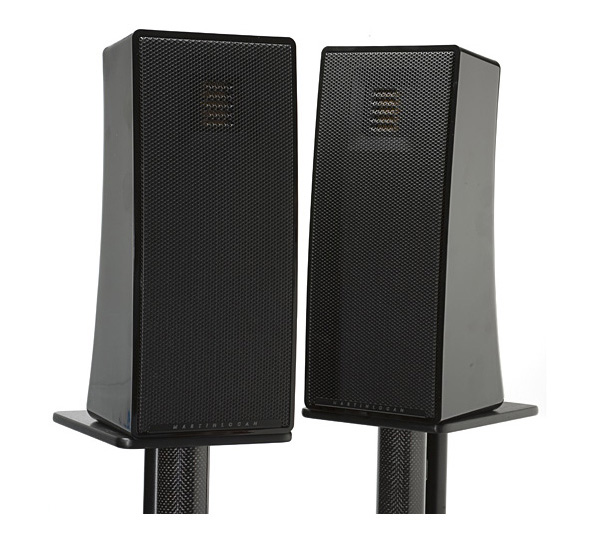 I must admit, I’m almost never impressed with what I hear at audio shows, and it’s not for the manufacturers’ lack of trying. It’s always tough to hear anything decently at a show, even if the room is set up fairly well. But at last year’s CEDIA convention, there was something that really blew me away, the final prototypes of MartinLogan’s new Motion series, especially when I saw how tiny they were.
I must admit, I’m almost never impressed with what I hear at audio shows, and it’s not for the manufacturers’ lack of trying. It’s always tough to hear anything decently at a show, even if the room is set up fairly well. But at last year’s CEDIA convention, there was something that really blew me away, the final prototypes of MartinLogan’s new Motion series, especially when I saw how tiny they were.


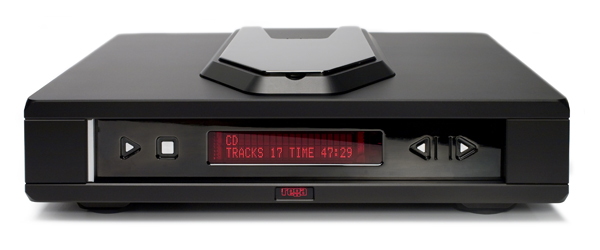 Rega has established a solid reputation over the last thirty years now for building reasonably priced components packed with value beyond their price point. Rega turntables have always been a triumph of function and simplicity, with a legion of fans that span the globe. Founder Roy Gandy is a champion of giving his customers high performance without a high price tag, and didn’t even start building CD players until about ten years ago. His sense of humor is evident in their website, where it’s mentioned that Rega was “the last major high end company to build a CD player.”
Rega has established a solid reputation over the last thirty years now for building reasonably priced components packed with value beyond their price point. Rega turntables have always been a triumph of function and simplicity, with a legion of fans that span the globe. Founder Roy Gandy is a champion of giving his customers high performance without a high price tag, and didn’t even start building CD players until about ten years ago. His sense of humor is evident in their website, where it’s mentioned that Rega was “the last major high end company to build a CD player.”




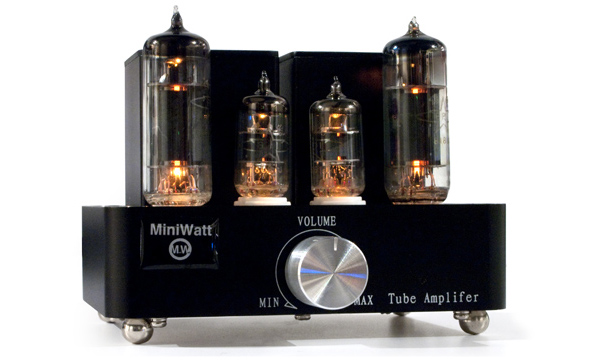 No matter what your position in the audiophile game, you need a MiniWatt. This is one of the most fun pieces of gear I’ve seen in about fifteen years. (The last time was when the Antique Sound Labs Company sold their $99 tube monoblocks…) The MiniWatt is a 2.5-watt per channel tube amplifier that weighs a couple of pounds and only takes up about a 6 x 6 inch footprint on your desk, about 15 x 15 centimeters for our friends in the rest of the world.
No matter what your position in the audiophile game, you need a MiniWatt. This is one of the most fun pieces of gear I’ve seen in about fifteen years. (The last time was when the Antique Sound Labs Company sold their $99 tube monoblocks…) The MiniWatt is a 2.5-watt per channel tube amplifier that weighs a couple of pounds and only takes up about a 6 x 6 inch footprint on your desk, about 15 x 15 centimeters for our friends in the rest of the world.


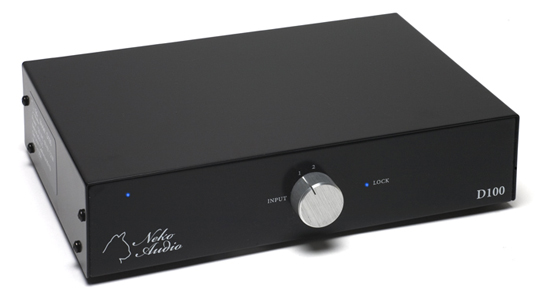 Digital Excellence:
Digital Excellence:
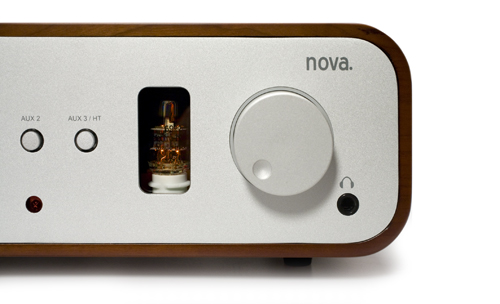



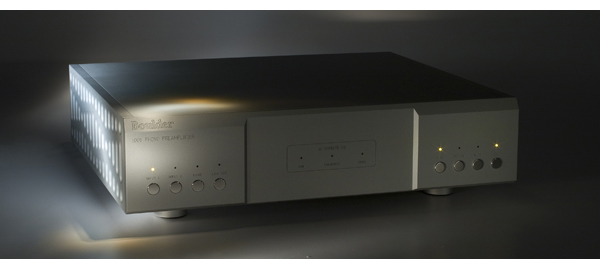 Introduced in 2002, the Boulder 2008 phono preamplifier caused quite a stir and was considered the top of the analog mountain by many. With three inputs and variable EQ options for older recordings, it left no bases uncovered. It still remains king to many people, but at $33,500 out of reach for all but the most well heeled audiophiles.
Introduced in 2002, the Boulder 2008 phono preamplifier caused quite a stir and was considered the top of the analog mountain by many. With three inputs and variable EQ options for older recordings, it left no bases uncovered. It still remains king to many people, but at $33,500 out of reach for all but the most well heeled audiophiles. A peek inside the box reveals Boulder’s meticulous construction and outside, their flawless casework. Though light by Boulder standards at 32 pounds, the 1008 is a bit more manageable than it’s larger brother, but equally potent. (And it still weighs as much as some power amplifiers I’ve reviewed.) A one-chassis design, the 1008 still features dual mono construction throughout and heavy duty shielding on the power transformer to isolate it from the rest of the circuitry. Thanks to 70db of gain, and a noise floor that redefines quiet, you should be able to use any phono cartridge available, no matter how low the output with no issue. The MM input features 44db of gain, and allows for adjusting the capacitive load as well, so the 1008 is infinitely configurable to suit your needs.
A peek inside the box reveals Boulder’s meticulous construction and outside, their flawless casework. Though light by Boulder standards at 32 pounds, the 1008 is a bit more manageable than it’s larger brother, but equally potent. (And it still weighs as much as some power amplifiers I’ve reviewed.) A one-chassis design, the 1008 still features dual mono construction throughout and heavy duty shielding on the power transformer to isolate it from the rest of the circuitry. Thanks to 70db of gain, and a noise floor that redefines quiet, you should be able to use any phono cartridge available, no matter how low the output with no issue. The MM input features 44db of gain, and allows for adjusting the capacitive load as well, so the 1008 is infinitely configurable to suit your needs. Other than placing the 1008 on my rack and plugging it in to a Running Springs Dmitri power conditioner (with Shunyata Python CX power cord, as all of my other low level components are), the only setup necessary was changing the loading on input two to low gain via a switch and unsoldering the 100 ohm resistor from the removable “personality card”, so that I could investigate the moving magnet and moving iron cartridges in my collection from Clearaudio, Grado and Soundsmith. The other cartridges used on input one were the Lyra Skala, Dynavector XV-1s and the ZYX Omega, reviewed in issue 28 of TONEAudio. I briefly auditioned the Clearaudio DaVinci, but found its slightly forward presentation not to my liking with the 1008.
Other than placing the 1008 on my rack and plugging it in to a Running Springs Dmitri power conditioner (with Shunyata Python CX power cord, as all of my other low level components are), the only setup necessary was changing the loading on input two to low gain via a switch and unsoldering the 100 ohm resistor from the removable “personality card”, so that I could investigate the moving magnet and moving iron cartridges in my collection from Clearaudio, Grado and Soundsmith. The other cartridges used on input one were the Lyra Skala, Dynavector XV-1s and the ZYX Omega, reviewed in issue 28 of TONEAudio. I briefly auditioned the Clearaudio DaVinci, but found its slightly forward presentation not to my liking with the 1008. Moving back into my comfort zone, I revisited the Supertramp album that I began my evaluation with and was impressed at how much bigger the sound had grown in all three dimensions, very impressive. Next stop, the recent remasters of the Kraftwerk catalog. The driving beats in Tour De France were pounding, and at extremely high level, starting to shake my building. Thanks to that 20hz low pass filter, I was able to drive my system to discothèque levels without a hint of feedback. This also came in handy with moderately warped records. With a system that extends to 20hz, recorded anomalies that were not a problem when my system bottomed out at around 30hz now are front and center. The filter worked well without diminishing the subterranean bass drive of the system.
Moving back into my comfort zone, I revisited the Supertramp album that I began my evaluation with and was impressed at how much bigger the sound had grown in all three dimensions, very impressive. Next stop, the recent remasters of the Kraftwerk catalog. The driving beats in Tour De France were pounding, and at extremely high level, starting to shake my building. Thanks to that 20hz low pass filter, I was able to drive my system to discothèque levels without a hint of feedback. This also came in handy with moderately warped records. With a system that extends to 20hz, recorded anomalies that were not a problem when my system bottomed out at around 30hz now are front and center. The filter worked well without diminishing the subterranean bass drive of the system. Boulder rounds off their design with a few extra touches that make the 1008 a great choice for the real vinyl connoisseur. There is a separate EQ selector for early Columbia and EMI records as well as the early Decca ffrr recordings. While I don’t have many of these records in my collection at present, should the 1008 become part of my reference system, I would no longer shy away from them in the future.
Boulder rounds off their design with a few extra touches that make the 1008 a great choice for the real vinyl connoisseur. There is a separate EQ selector for early Columbia and EMI records as well as the early Decca ffrr recordings. While I don’t have many of these records in my collection at present, should the 1008 become part of my reference system, I would no longer shy away from them in the future. For the vinyl enthusiast that dreams of owning a Continuum table and Boulder 2008 phono preamp, but will never be able to scratch together $200k, trust me, combine the Boulder 1008 with your favorite $25k table, arm and cartridge and go to bed with a big smile on your face.
For the vinyl enthusiast that dreams of owning a Continuum table and Boulder 2008 phono preamp, but will never be able to scratch together $200k, trust me, combine the Boulder 1008 with your favorite $25k table, arm and cartridge and go to bed with a big smile on your face.
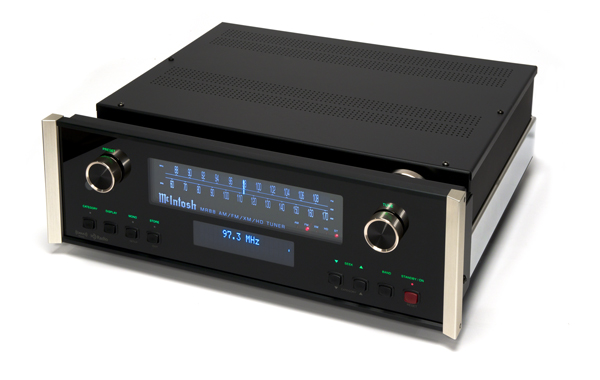 Sometimes, one longs for the hi-fi simplicity of the 1970s. Back then, FM radio functioned as the prime source of listening for many a music lover. AOR FM was in high gear, and people just tuned into any number of stations to get a music fix. Those with audiophile leanings often invested in a separate tuner to optimize the FM sound quality. Often, a manufacturer’s top-of-the-line tuner represented the best and most highly engineered product in its whole line. Companies such as Yamaha, Pioneer, SAE, Kenwood, Sansui, Marantz, Technics, Sony, and McIntosh waged a high-stakes tech war to see who could develop the king of the airwaves: A tuner with clean, clear reception coupled with good sound.
Sometimes, one longs for the hi-fi simplicity of the 1970s. Back then, FM radio functioned as the prime source of listening for many a music lover. AOR FM was in high gear, and people just tuned into any number of stations to get a music fix. Those with audiophile leanings often invested in a separate tuner to optimize the FM sound quality. Often, a manufacturer’s top-of-the-line tuner represented the best and most highly engineered product in its whole line. Companies such as Yamaha, Pioneer, SAE, Kenwood, Sansui, Marantz, Technics, Sony, and McIntosh waged a high-stakes tech war to see who could develop the king of the airwaves: A tuner with clean, clear reception coupled with good sound.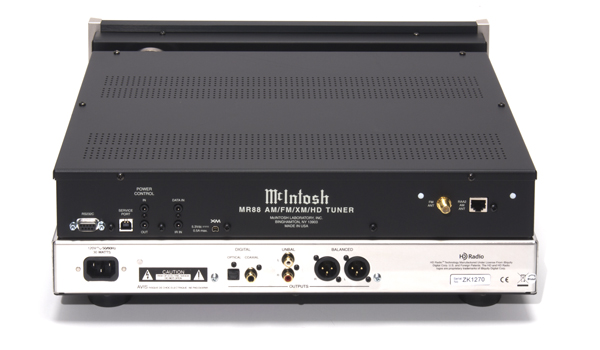
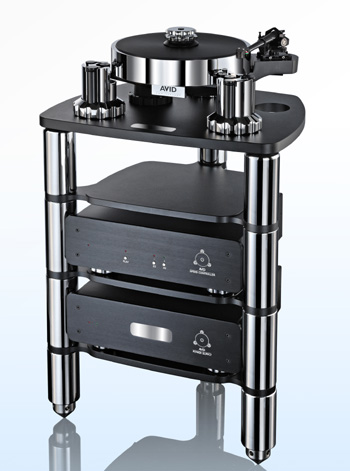 Avid HiFi, clearly on a roll after releasing their stellar Pulsare phono stage (watch for the review here, shortly) has topped their line of turntables with the Limited Edition Anniversary model, of which only 10 will be made, in celebration of their 10th anniversary.
Avid HiFi, clearly on a roll after releasing their stellar Pulsare phono stage (watch for the review here, shortly) has topped their line of turntables with the Limited Edition Anniversary model, of which only 10 will be made, in celebration of their 10th anniversary.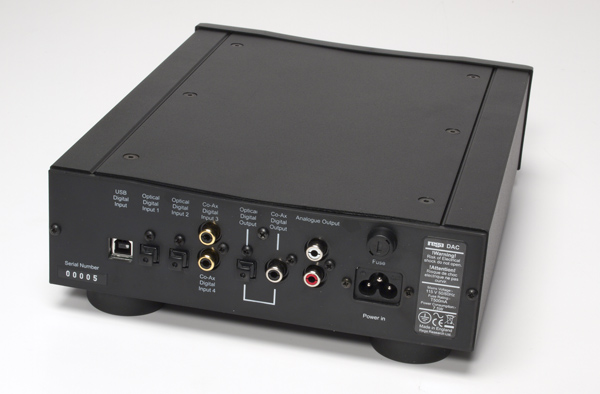
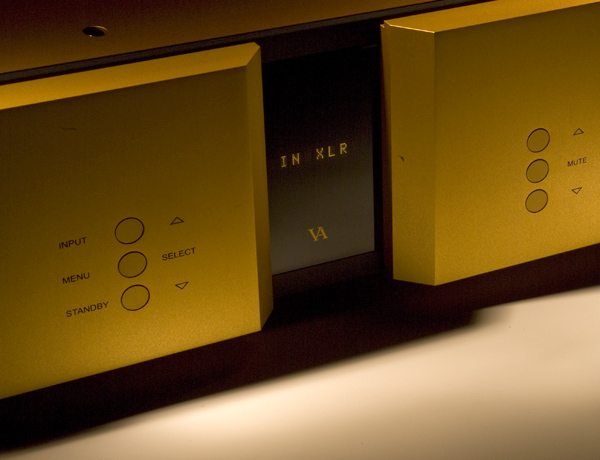 The Vitus Audio SS-050 is a very high performance, yet minimalist integrated amplifier. Tipping the upper end of the price scale at $26,500, this is another destination product, and with one XLR and one RCA input, must be made part of a system that has only two sources. I imagine that this should pose no problem for the average person who has an analog source and a digital source.
The Vitus Audio SS-050 is a very high performance, yet minimalist integrated amplifier. Tipping the upper end of the price scale at $26,500, this is another destination product, and with one XLR and one RCA input, must be made part of a system that has only two sources. I imagine that this should pose no problem for the average person who has an analog source and a digital source.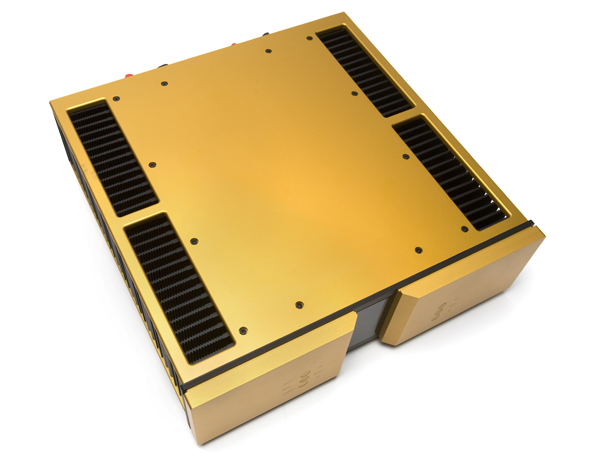 As with any solid-state amplifier that has been in transit for some time, the SS-050 took about 48 hours to open up, stabilize and sound it’s best, though it was more than pleasant out of the shipping carton. After spending a few weeks with the amplifier and going through regular power cycles, it takes about 30 minutes to fully stabilize in normal play.
As with any solid-state amplifier that has been in transit for some time, the SS-050 took about 48 hours to open up, stabilize and sound it’s best, though it was more than pleasant out of the shipping carton. After spending a few weeks with the amplifier and going through regular power cycles, it takes about 30 minutes to fully stabilize in normal play.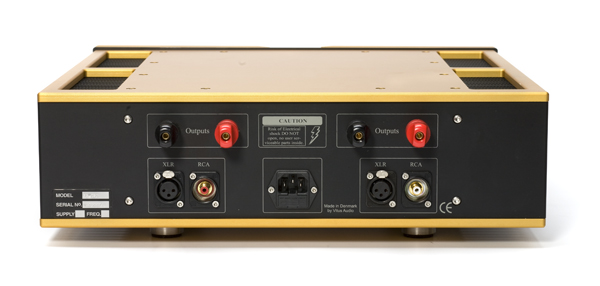 I just happened to be listening to the complete set of the current AC/DC remasters on vinyl, so the first track I played on the Vitus based system was “Live Wire” from the High Voltage album. The guitar lead-in on this piece instantly struck me, as I could hear the speakers in whatever cabinet Angus Young was using to record with rattle, much clearer than ever before. Next up was “Night Prowler” from Highway to Hell. Again, I was impressed with not only the weight, but also the subtle texture and roundness of the opening bass riffs in this track. When I turned this up, perhaps too loud, the placement of the snare drum remained rock solid, just in front of the soundstage on the right side, and did not fall back into the mix. However, when I went back to my early stamper originals, it was plainly obvious that these records were produced from digital safety masters; another layer of detail was now available.
I just happened to be listening to the complete set of the current AC/DC remasters on vinyl, so the first track I played on the Vitus based system was “Live Wire” from the High Voltage album. The guitar lead-in on this piece instantly struck me, as I could hear the speakers in whatever cabinet Angus Young was using to record with rattle, much clearer than ever before. Next up was “Night Prowler” from Highway to Hell. Again, I was impressed with not only the weight, but also the subtle texture and roundness of the opening bass riffs in this track. When I turned this up, perhaps too loud, the placement of the snare drum remained rock solid, just in front of the soundstage on the right side, and did not fall back into the mix. However, when I went back to my early stamper originals, it was plainly obvious that these records were produced from digital safety masters; another layer of detail was now available.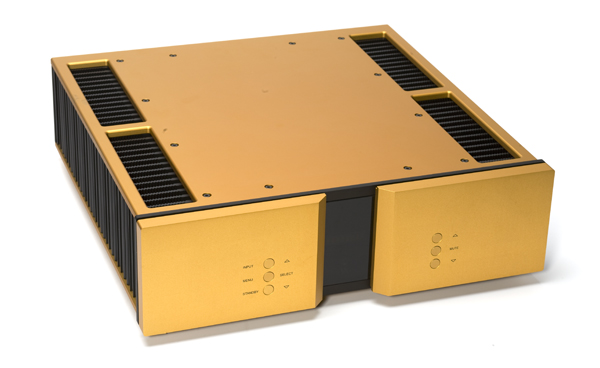
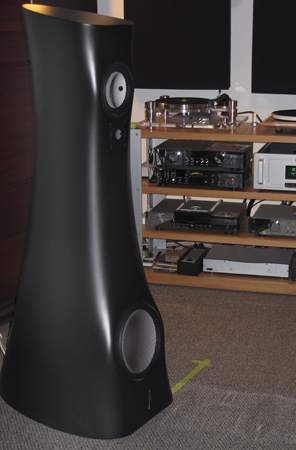 UPDATE: Nov. 31
UPDATE: Nov. 31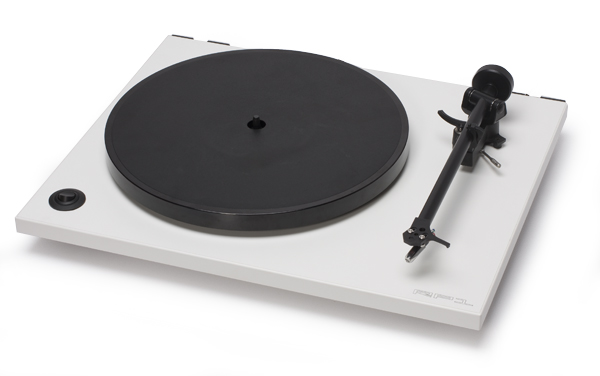 Rega met the budget turntable challenge in 2006 with their entry-level P1 turntable, offering the budding vinyl enthusiast a way to join the Rega camp with a brand new table and Ortofon OM5e cartridge for only $400. While Rega has always been one of the best values going in turntables, inflation and world currency markets have taken their toll everywhere. I remember purchasing my first Planar 3 turntable (back in 1979, without cartridge) for $389. Those were the days.
Rega met the budget turntable challenge in 2006 with their entry-level P1 turntable, offering the budding vinyl enthusiast a way to join the Rega camp with a brand new table and Ortofon OM5e cartridge for only $400. While Rega has always been one of the best values going in turntables, inflation and world currency markets have taken their toll everywhere. I remember purchasing my first Planar 3 turntable (back in 1979, without cartridge) for $389. Those were the days.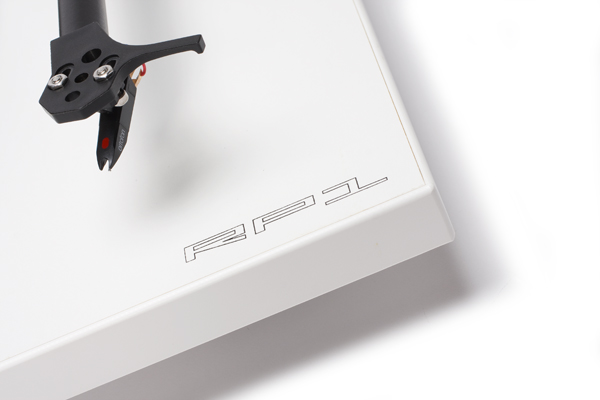
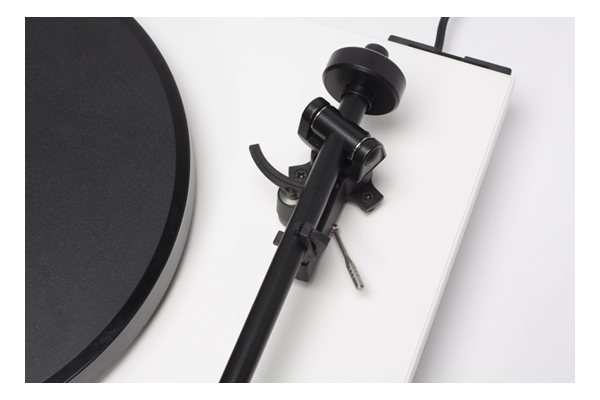 The combination of an improved platter and bearing are a big hit on the RP1. Listening to samples from both tables on the MoFi edition of Genesis’ Trick of the Tail had the RP1 again trumping the P1 in bass weight on “Squonk” and HF definition and delicacy on the title track. Cymbals definitely had a smoother decay on the RP1 as well.
The combination of an improved platter and bearing are a big hit on the RP1. Listening to samples from both tables on the MoFi edition of Genesis’ Trick of the Tail had the RP1 again trumping the P1 in bass weight on “Squonk” and HF definition and delicacy on the title track. Cymbals definitely had a smoother decay on the RP1 as well.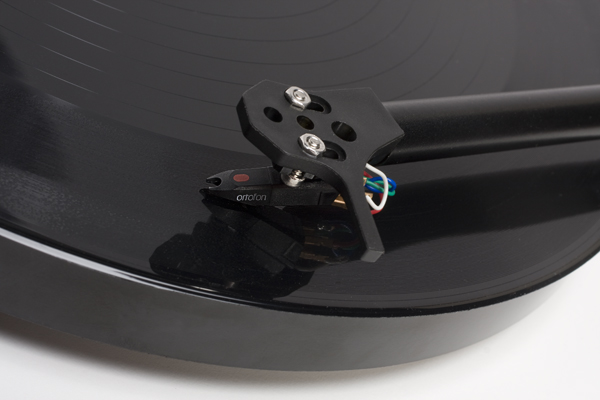
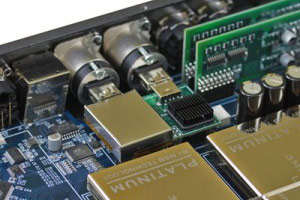
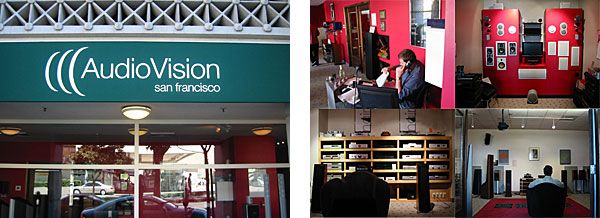 Thursday, October 28th, 2010, 7:30-9:30 pm: AudioVision San Francisco presents the 3rd installment of its Fiscally Sound Event. An evening event featuring 2 moderately priced systems which include Cardas Signal Cables , Nola Loudspeakers, Finite Elemente Isolation/Support Products, Spiral Groove & Hanss Turntables, Lyra Cartidges and Audio Research Tube Electronics .
Thursday, October 28th, 2010, 7:30-9:30 pm: AudioVision San Francisco presents the 3rd installment of its Fiscally Sound Event. An evening event featuring 2 moderately priced systems which include Cardas Signal Cables , Nola Loudspeakers, Finite Elemente Isolation/Support Products, Spiral Groove & Hanss Turntables, Lyra Cartidges and Audio Research Tube Electronics . 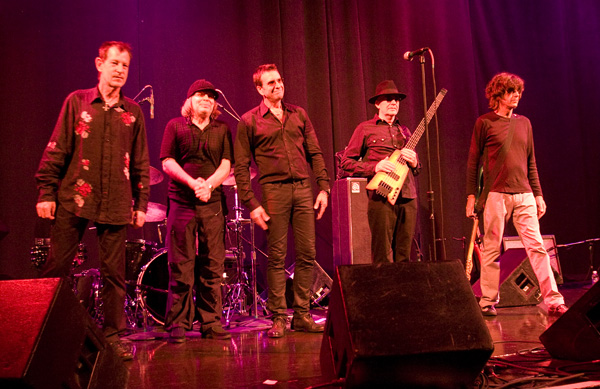
 The members of Tortoise are pushing buttons, lightly skimming drums and cymbals, and creating what could be a composition designed for playback on a hi-tech calculator. Nothing about the Chicago quintet ever changes, including its disposition, a mix of stoic and serious. Counting producers and engineers amongst its fold, Tortoise approaches jazz-rock fusion with an audio geek’s focused sensibility, the completely instrumental songs alternatively ambient and direct, fading and flowing, squealing and soothing. Jeff Parker picks out the occasional staccato passage on guitar, prompting Douglas McCombs to respond with a thicker bass line. Once a tune finishes its course, Tortoise shifts positions, exchanging seats on the drum kit or manning a second percussive stool, or picking up the mallets and preparing for a turn on the vibraphones. The band’s liquid funk, outré blues, and modulated electronics give off a pastel glow that’s not dissimilar from the purple hues of the overhead lighting. However cerebral and dependable, the experience is best ingested in small doses.
The members of Tortoise are pushing buttons, lightly skimming drums and cymbals, and creating what could be a composition designed for playback on a hi-tech calculator. Nothing about the Chicago quintet ever changes, including its disposition, a mix of stoic and serious. Counting producers and engineers amongst its fold, Tortoise approaches jazz-rock fusion with an audio geek’s focused sensibility, the completely instrumental songs alternatively ambient and direct, fading and flowing, squealing and soothing. Jeff Parker picks out the occasional staccato passage on guitar, prompting Douglas McCombs to respond with a thicker bass line. Once a tune finishes its course, Tortoise shifts positions, exchanging seats on the drum kit or manning a second percussive stool, or picking up the mallets and preparing for a turn on the vibraphones. The band’s liquid funk, outré blues, and modulated electronics give off a pastel glow that’s not dissimilar from the purple hues of the overhead lighting. However cerebral and dependable, the experience is best ingested in small doses. 6:16 p.m.: Kim Gordon lounges on a couch in the main lobby. Few fans notice her, though she does take a moment to check her cell phone. She looks as if she’s ready to stroll around the block; nothing about her presence shouts “rock star.” Indeed, one of the biggest appeals of ATP is the sense that everybody–bands, press, fans–are equals. Aside from a small interview staging area, there’s nary a sign of the separation present at other major festivals. No VIP section, no overpriced cabanas, no stages named after a video-game console. Moreover, the laid-back environment and existence of the Criterion cinema further lends to a cozy, unhurried vibe one can’t even get at the Pitchfork Music Festival. The small amount of people is also a huge plus, making access simple, quick, and easy.
6:16 p.m.: Kim Gordon lounges on a couch in the main lobby. Few fans notice her, though she does take a moment to check her cell phone. She looks as if she’s ready to stroll around the block; nothing about her presence shouts “rock star.” Indeed, one of the biggest appeals of ATP is the sense that everybody–bands, press, fans–are equals. Aside from a small interview staging area, there’s nary a sign of the separation present at other major festivals. No VIP section, no overpriced cabanas, no stages named after a video-game console. Moreover, the laid-back environment and existence of the Criterion cinema further lends to a cozy, unhurried vibe one can’t even get at the Pitchfork Music Festival. The small amount of people is also a huge plus, making access simple, quick, and easy.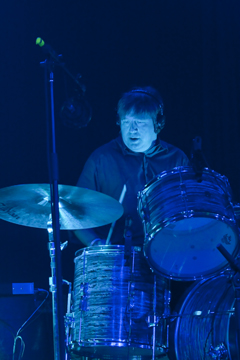
 8:24 p.m.: Todd Trainer holds up a portable snare drum in front of guitarist/vocalist Steve Albini’s microphone, the drummer moving around the stage as Shellac begins an epic version of “The End of Radio.” Before the cleverly on-point song concludes, Albini reverently mentions legendary broadcasters Vin Scully, Jimmy Piersall, and Studs Terkel while chastising hate-mongering hacks such as Rush Limbaugh. Albini is in the process of delivering a somewhat impromptu monologue about the history of radio to an imagined alien civilization that sprouts up 10,000 years from now. It’s one part sincere apology and nine parts sarcastic, truthful observation of what the medium has become and how society has let it, and its content, go to waste. As Trainer walks about, flinging drumsticks at ceiling tiles and giving new meaning to “little drummer boy,” the Shellac singer wittily references Jonathan Richman’s “Roadrunner,” Eddie Money’s “Two Tickets to Paradise,” and an annoying Verizon slogan in mocking radio’s commercial excesses, crass promotions, and cliched Top Ten lists. It’s an inspired piece of rock theater, and the song bristles with the combination of seething anger, push-and-shove momentum, tightrope tension, and offbeat humor that infuse pertinent Shellac songs such as “Steady As She Goes.” In just 45 minutes, the Chicago trio verges on stealing the show away from the bigger-name headliners, thanks to immaculate, dry, crisp sonics and unbridled intensity. Albini and seemingly cuddly bassist Bob Weston (each accomplished recording engineers) play through trademark silver amps distinguished by one large knob and audiophile-grade tones. The music swerves and dives, pausing and resuming at unconventional intervals, and erupting with an intentional imbalance of murderous intent and comical relief.
8:24 p.m.: Todd Trainer holds up a portable snare drum in front of guitarist/vocalist Steve Albini’s microphone, the drummer moving around the stage as Shellac begins an epic version of “The End of Radio.” Before the cleverly on-point song concludes, Albini reverently mentions legendary broadcasters Vin Scully, Jimmy Piersall, and Studs Terkel while chastising hate-mongering hacks such as Rush Limbaugh. Albini is in the process of delivering a somewhat impromptu monologue about the history of radio to an imagined alien civilization that sprouts up 10,000 years from now. It’s one part sincere apology and nine parts sarcastic, truthful observation of what the medium has become and how society has let it, and its content, go to waste. As Trainer walks about, flinging drumsticks at ceiling tiles and giving new meaning to “little drummer boy,” the Shellac singer wittily references Jonathan Richman’s “Roadrunner,” Eddie Money’s “Two Tickets to Paradise,” and an annoying Verizon slogan in mocking radio’s commercial excesses, crass promotions, and cliched Top Ten lists. It’s an inspired piece of rock theater, and the song bristles with the combination of seething anger, push-and-shove momentum, tightrope tension, and offbeat humor that infuse pertinent Shellac songs such as “Steady As She Goes.” In just 45 minutes, the Chicago trio verges on stealing the show away from the bigger-name headliners, thanks to immaculate, dry, crisp sonics and unbridled intensity. Albini and seemingly cuddly bassist Bob Weston (each accomplished recording engineers) play through trademark silver amps distinguished by one large knob and audiophile-grade tones. The music swerves and dives, pausing and resuming at unconventional intervals, and erupting with an intentional imbalance of murderous intent and comical relief.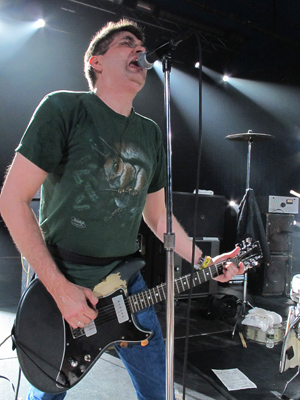
 9:20 p.m.: Kelley Deal stands on her tippy-tippy toes to sing “I Am Decided” and assumes that posture throughout the Breeders’ disappointing performance. After taking extra time to set up an armada of effects pedals, keyboards, and other related gear, the Breeders treat their slot as a band practice where anything goes. Little about the quintet suggests they’ve given any thought to their material in a while. Neither Kelley nor her more famous twin sister, Kim, prove competent on guitar, and frivolous pop fare like “Bang On,” “Divine Hammer,” and “We’re Gonna Rise” amateurishly drift on by. Several tunes fumble with skeletal arrangements that share more in common with fragments than whole songs. Unconcerned and lackadaisical, Kelley appears oblivious to the band’s hollow state. Only the surf-dipped “Tipp City,” slinky early 90s hit “Cannnonball,” and a country-bluegrass rendition of “Driving on 9,” during which the Breeders are joined by a guest violinist, register any vitality. The rest is goofy, sloppy, unremarkable, and, particularly after Shellac, boring.
9:20 p.m.: Kelley Deal stands on her tippy-tippy toes to sing “I Am Decided” and assumes that posture throughout the Breeders’ disappointing performance. After taking extra time to set up an armada of effects pedals, keyboards, and other related gear, the Breeders treat their slot as a band practice where anything goes. Little about the quintet suggests they’ve given any thought to their material in a while. Neither Kelley nor her more famous twin sister, Kim, prove competent on guitar, and frivolous pop fare like “Bang On,” “Divine Hammer,” and “We’re Gonna Rise” amateurishly drift on by. Several tunes fumble with skeletal arrangements that share more in common with fragments than whole songs. Unconcerned and lackadaisical, Kelley appears oblivious to the band’s hollow state. Only the surf-dipped “Tipp City,” slinky early 90s hit “Cannnonball,” and a country-bluegrass rendition of “Driving on 9,” during which the Breeders are joined by a guest violinist, register any vitality. The rest is goofy, sloppy, unremarkable, and, particularly after Shellac, boring. 10:54 p.m.: The three guitarists in Explosions In the Sky simultaneously plunge their hands against the bodies of their instruments, swiping the strings with gusto while they all lean and jump forward at once. It looks as if the sight could be choreographed, but the display is simply an outpouring of the emotion and conviction that the wordless Austin quartet brings to its hybrid of gentle dream pop, bursting cosmic rock, and intermittent instru-metal heaviness. Seen on the stage floor in the dark, the band’s lengthy arc of flashing effects pedals looks like a miniature version of an airport runway lit up at night. Deploying sustain, delay, distortion, wah, and volume effects, the group’s ambitious compositions are true to the band’s name. Harmonically driven songs conjure images of meteor showers, lightning storms, the aurora borealis, rocket launches, and solar eclipses. Laden with texture and color, individual notes shoot and spark, the trickles of reverb coalescing and forming choruses of sound that glow like stars against a deep-black sky. The members close their eyes for a majority of the concert, losing themselves in dynamic washes of controlled feedback and moody atmospherics. Tempos thrust forward and reverse, melodies flutter, and when crescendos reach an agitated state, the eventual detonations are often cushioned by a comforting softness. Explosions In the Sky revels in the areas found between light, shade, and darkness, and the band’s widescreen sonics allow abrasive passages to seamlessly merge with quieter, wispy sequences. During climaxes, sudden depth-charge booms function as avalanches, knocking over the geometrical shapes that the band so carefully assembles. Imagine a tranquil sea progressively discharging a steady river of water that, once heated and collected, bears down on a compromised dam and leaves nothing in its wake. Extremely impressive, and wonderfully executed.
10:54 p.m.: The three guitarists in Explosions In the Sky simultaneously plunge their hands against the bodies of their instruments, swiping the strings with gusto while they all lean and jump forward at once. It looks as if the sight could be choreographed, but the display is simply an outpouring of the emotion and conviction that the wordless Austin quartet brings to its hybrid of gentle dream pop, bursting cosmic rock, and intermittent instru-metal heaviness. Seen on the stage floor in the dark, the band’s lengthy arc of flashing effects pedals looks like a miniature version of an airport runway lit up at night. Deploying sustain, delay, distortion, wah, and volume effects, the group’s ambitious compositions are true to the band’s name. Harmonically driven songs conjure images of meteor showers, lightning storms, the aurora borealis, rocket launches, and solar eclipses. Laden with texture and color, individual notes shoot and spark, the trickles of reverb coalescing and forming choruses of sound that glow like stars against a deep-black sky. The members close their eyes for a majority of the concert, losing themselves in dynamic washes of controlled feedback and moody atmospherics. Tempos thrust forward and reverse, melodies flutter, and when crescendos reach an agitated state, the eventual detonations are often cushioned by a comforting softness. Explosions In the Sky revels in the areas found between light, shade, and darkness, and the band’s widescreen sonics allow abrasive passages to seamlessly merge with quieter, wispy sequences. During climaxes, sudden depth-charge booms function as avalanches, knocking over the geometrical shapes that the band so carefully assembles. Imagine a tranquil sea progressively discharging a steady river of water that, once heated and collected, bears down on a compromised dam and leaves nothing in its wake. Extremely impressive, and wonderfully executed.  1:07 a.m.: Sonic Youth attacks the riotous “Death Valley ’69” with a fervent menace that suggests the band is on the run from a desert madman. Lee Ranaldo, Thurston Moore, and Kim Gordon exuberantly shout into the microphone as the psychedelic ramalama boils to a fever pitch, drummer Steve Shelley pounding out a circular romp on the drum kit as a sign that the group needs to round up the wagons. Playing with vicious energy and rampant urgency, the iconic New York art-rock quartet appears to be in an especially blustery state of mind. What’s immediately obvious is how far the band has come as accomplished musicians. The older, wiser Sonic Youth not only possesses the enviable disposition, freak-out experimentalism, and cool factor of the ensemble’s early days, it also has the effortless capacity to spin thickets of imaginative noise and patchwork quilts of combustive rhythms into discernible songs. Gordon pounces with dont-mess-with-me feminist attitude on “The Sprawl.” “Cross the Border” turns wild in a hurry, Moore sensing the excitement and jumping with childlike glee as the tune dangerously races around the bend, its manic thrash pace inspiring an active mosh pit. “Catholic Block” leaves its mark like a graffiti tagger does on a subway car. Similarly, the rush of New York’s bustling downtown– the cabs, horns, trains, pedestrians, vendors–can be heard on the sensory-blurring “Stereo Sanctity.” The band carves out plenty of space for adventurism, with “Eric’s Trip” finding Moore assailing a modulated, hollowed-out bass and “Hey Joni” whirring to groundswells of corrosive feedback. Hot-rodded guitars cough, wheeze, burp, and gurgle. Pieces of wood double as makeshift bows that are dragged across frets and necks. Alternate tunings bring forth unexpected shifts and twists. Sonic Youth handles and shapes the seemingly discordant mix like aural putty, undaunted by the possibilities and renewed by the potential of what’s to come. What a homecoming.
1:07 a.m.: Sonic Youth attacks the riotous “Death Valley ’69” with a fervent menace that suggests the band is on the run from a desert madman. Lee Ranaldo, Thurston Moore, and Kim Gordon exuberantly shout into the microphone as the psychedelic ramalama boils to a fever pitch, drummer Steve Shelley pounding out a circular romp on the drum kit as a sign that the group needs to round up the wagons. Playing with vicious energy and rampant urgency, the iconic New York art-rock quartet appears to be in an especially blustery state of mind. What’s immediately obvious is how far the band has come as accomplished musicians. The older, wiser Sonic Youth not only possesses the enviable disposition, freak-out experimentalism, and cool factor of the ensemble’s early days, it also has the effortless capacity to spin thickets of imaginative noise and patchwork quilts of combustive rhythms into discernible songs. Gordon pounces with dont-mess-with-me feminist attitude on “The Sprawl.” “Cross the Border” turns wild in a hurry, Moore sensing the excitement and jumping with childlike glee as the tune dangerously races around the bend, its manic thrash pace inspiring an active mosh pit. “Catholic Block” leaves its mark like a graffiti tagger does on a subway car. Similarly, the rush of New York’s bustling downtown– the cabs, horns, trains, pedestrians, vendors–can be heard on the sensory-blurring “Stereo Sanctity.” The band carves out plenty of space for adventurism, with “Eric’s Trip” finding Moore assailing a modulated, hollowed-out bass and “Hey Joni” whirring to groundswells of corrosive feedback. Hot-rodded guitars cough, wheeze, burp, and gurgle. Pieces of wood double as makeshift bows that are dragged across frets and necks. Alternate tunings bring forth unexpected shifts and twists. Sonic Youth handles and shapes the seemingly discordant mix like aural putty, undaunted by the possibilities and renewed by the potential of what’s to come. What a homecoming. 

 The provocative “Halloween” injects filthy sludge by way of syringe before Arm, preparing for his close-up, deftly moves out of the way of an out-of-control crowd surfer that nearly kicks him in the face. The band plays on as if it’s an everyday occurrence. “In and Out of Grace” captures Mudhoney’s knack for driving melodies, the song wrestling with itself until it gives way to a brief Dan Peters drum break that’s straight out of a classic surf song. Arm no longer yelps as loudly as he once did, but there’s nothing wrong with his attitude or wail—or their ability to convey frustration, desperation, and dissatisfaction with a knowing wink. Witty humor underlines nearly every tune, with “You Got It (Keep It Out of My Face)” emphatic albeit slackjawed and “If I Think” jeering at the leftover residue from an emotional breakup. Nothing that another drink won’t solve. Point taken.
The provocative “Halloween” injects filthy sludge by way of syringe before Arm, preparing for his close-up, deftly moves out of the way of an out-of-control crowd surfer that nearly kicks him in the face. The band plays on as if it’s an everyday occurrence. “In and Out of Grace” captures Mudhoney’s knack for driving melodies, the song wrestling with itself until it gives way to a brief Dan Peters drum break that’s straight out of a classic surf song. Arm no longer yelps as loudly as he once did, but there’s nothing wrong with his attitude or wail—or their ability to convey frustration, desperation, and dissatisfaction with a knowing wink. Witty humor underlines nearly every tune, with “You Got It (Keep It Out of My Face)” emphatic albeit slackjawed and “If I Think” jeering at the leftover residue from an emotional breakup. Nothing that another drink won’t solve. Point taken. 9:20 p.m.: Iggy Pop lands onstage as if he’s just been shot out of a cannon. James Williamson batters his guitar, Mike Watt throttles the bass, and the Stooges charge into Raw Power with manic delight. At 63, the animated Pop seems more animal than human, his sinewy body riddled with grainy lines that resemble those found on a cut of flank steak. He sways his hips, punches imaginary foes, and enthusiastically dives at the feet of his mates, getting right up in the faces of the fans in the front rows that egg him on to escalate his wild antics. Pop responds by writhing and flailing, throwing microphone stands, pushing speaker monitors into the P.A. system (an action that causes nervousness amongst the stagehands attempting to re-steady the speakers), jumping into the crowd, and yelling for his band to keep up. Watt, Williamson, and company are more than up to task. From a crouched stance, Watt watches the entire spectacle with a sense of invested intensity, much like an overzealous football coach barking at his team to annihilate the opponent. Williamson is all business, manhandling his guitar and reeling off searing solos that further spike Pop’s adrenaline. Steve MacKay remains off to the side, yet his blaring saxophone fuels the music’s free-jazz irreverence. “Search and Destroy,” “Your Pretty Face Is Going to Hell,” and “Penetration” are pure unadulterated kicks to the stomach and uppercuts to the head. The explosions of unfettered volume, storming violence, and pummeling riffs are as inspiring as they are threatening. “Gimme Danger” bristles with deadly sensuality, a characteristic epitomized by Pop’s physical movements and primal shrieks. He invites “freaks” and “spazzers” up onstage for a chaotic “Shake Appeal,” yet this communal showing is topped by “I Got a Right,” during which the iconic singer shouts “Do you feel it?” and demands an answer. Anyone within the premises that doesn’t feel the passionate fury that the Stooges are throwing down isn’t alive.
9:20 p.m.: Iggy Pop lands onstage as if he’s just been shot out of a cannon. James Williamson batters his guitar, Mike Watt throttles the bass, and the Stooges charge into Raw Power with manic delight. At 63, the animated Pop seems more animal than human, his sinewy body riddled with grainy lines that resemble those found on a cut of flank steak. He sways his hips, punches imaginary foes, and enthusiastically dives at the feet of his mates, getting right up in the faces of the fans in the front rows that egg him on to escalate his wild antics. Pop responds by writhing and flailing, throwing microphone stands, pushing speaker monitors into the P.A. system (an action that causes nervousness amongst the stagehands attempting to re-steady the speakers), jumping into the crowd, and yelling for his band to keep up. Watt, Williamson, and company are more than up to task. From a crouched stance, Watt watches the entire spectacle with a sense of invested intensity, much like an overzealous football coach barking at his team to annihilate the opponent. Williamson is all business, manhandling his guitar and reeling off searing solos that further spike Pop’s adrenaline. Steve MacKay remains off to the side, yet his blaring saxophone fuels the music’s free-jazz irreverence. “Search and Destroy,” “Your Pretty Face Is Going to Hell,” and “Penetration” are pure unadulterated kicks to the stomach and uppercuts to the head. The explosions of unfettered volume, storming violence, and pummeling riffs are as inspiring as they are threatening. “Gimme Danger” bristles with deadly sensuality, a characteristic epitomized by Pop’s physical movements and primal shrieks. He invites “freaks” and “spazzers” up onstage for a chaotic “Shake Appeal,” yet this communal showing is topped by “I Got a Right,” during which the iconic singer shouts “Do you feel it?” and demands an answer. Anyone within the premises that doesn’t feel the passionate fury that the Stooges are throwing down isn’t alive.  A harsh, demanding “I Wanna Be Your Dog” finds Pop wrapping the microphone cord around his neck while his cohorts turn the pounding music into an all-out blitzkrieg. The sonic torrent pushes the personalized “Open Up and Bleed” to the limits until everything threatens to collapse. Lights go up but the Stooges aren’t done. “Funhouse” swaggers with big-band R&B inertia and the closing “No Fun” wallops the senses, hitting hard and aggressively before sending Pop off with a huge smile after he takes one last tumble over the hands of a sweaty crowd that’s eager to give him his much-deserved victory lap. The bar for the remainder of the weekend is set extremely high. Will ATP 2010 be like Pitchfork 2009, when the Jesus Lizard performed on the first night and rendered the rest of the festival light by comparison? Bet on it.
A harsh, demanding “I Wanna Be Your Dog” finds Pop wrapping the microphone cord around his neck while his cohorts turn the pounding music into an all-out blitzkrieg. The sonic torrent pushes the personalized “Open Up and Bleed” to the limits until everything threatens to collapse. Lights go up but the Stooges aren’t done. “Funhouse” swaggers with big-band R&B inertia and the closing “No Fun” wallops the senses, hitting hard and aggressively before sending Pop off with a huge smile after he takes one last tumble over the hands of a sweaty crowd that’s eager to give him his much-deserved victory lap. The bar for the remainder of the weekend is set extremely high. Will ATP 2010 be like Pitchfork 2009, when the Jesus Lizard performed on the first night and rendered the rest of the festival light by comparison? Bet on it. 11:21 p.m.: How does a band follow the Stooges? If you’re Matt Pike, you slow down the pace, up the decibel level, and utilize volume as a mesmerizing narcotic. Far removed from both the style and presence of the Stooges, Sleep captivates with almost unimaginable amounts of heaviness. The reunited stoner metal trio’s foundation-shaking riffs and bowel-moving low-end thunder literally move the air in the room to the extent that anyone within the premises can feel the hairs on their arm moving from the vibrations. Dry ice fog and dense lighting shroud the band, whose psychedelic doom renders any vocals inaudible. This is all about the art of the drone and the dirge, and the committed virtuosity of the heavily tattooed guitar god Pike, who, with one swipe of his hand, unleashes a distorted chord that seems to hover for days. While playing Holy Mountain, Sleep treads as if scaling a glacier, taking its time, refusing to go fast, and steadily climbing up its way to the top. All that seems to be missing is the gong. Distinguished by titanic grooves, tectonic tension, and perception-changing feedback, the down-tuned thunder of overdriven sonic mulch such as “The Druid” and “Inside the Sun” appear to unfold in slow motion, coming into existence much like a fissure spits out lava on the ocean floor, whereby the presence of water distorts the rapidity at which the liquid is actually being released. Indeed, Sleep is playing in real time, and it’s this altered sense of reality that makes the group’s brand of sonic hypnotism and monolithic heaviness all the more impressive. Positively transfixing—and quite possibly the loudest show you’ll ever experience.
11:21 p.m.: How does a band follow the Stooges? If you’re Matt Pike, you slow down the pace, up the decibel level, and utilize volume as a mesmerizing narcotic. Far removed from both the style and presence of the Stooges, Sleep captivates with almost unimaginable amounts of heaviness. The reunited stoner metal trio’s foundation-shaking riffs and bowel-moving low-end thunder literally move the air in the room to the extent that anyone within the premises can feel the hairs on their arm moving from the vibrations. Dry ice fog and dense lighting shroud the band, whose psychedelic doom renders any vocals inaudible. This is all about the art of the drone and the dirge, and the committed virtuosity of the heavily tattooed guitar god Pike, who, with one swipe of his hand, unleashes a distorted chord that seems to hover for days. While playing Holy Mountain, Sleep treads as if scaling a glacier, taking its time, refusing to go fast, and steadily climbing up its way to the top. All that seems to be missing is the gong. Distinguished by titanic grooves, tectonic tension, and perception-changing feedback, the down-tuned thunder of overdriven sonic mulch such as “The Druid” and “Inside the Sun” appear to unfold in slow motion, coming into existence much like a fissure spits out lava on the ocean floor, whereby the presence of water distorts the rapidity at which the liquid is actually being released. Indeed, Sleep is playing in real time, and it’s this altered sense of reality that makes the group’s brand of sonic hypnotism and monolithic heaviness all the more impressive. Positively transfixing—and quite possibly the loudest show you’ll ever experience. 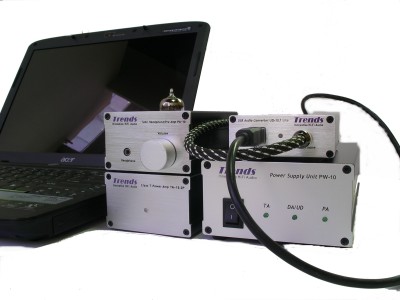 The masters of high performance miniature HiFI, Trends Audio, just released their new Combo 10 system, consisting of their UD-10.1 USB Audio Converter, PA-10 Tube Headphone Amplifier, TA10.2 Class-T Amplifier and PW-10 Power Supply as well as the required cables to assemble the system.
The masters of high performance miniature HiFI, Trends Audio, just released their new Combo 10 system, consisting of their UD-10.1 USB Audio Converter, PA-10 Tube Headphone Amplifier, TA10.2 Class-T Amplifier and PW-10 Power Supply as well as the required cables to assemble the system.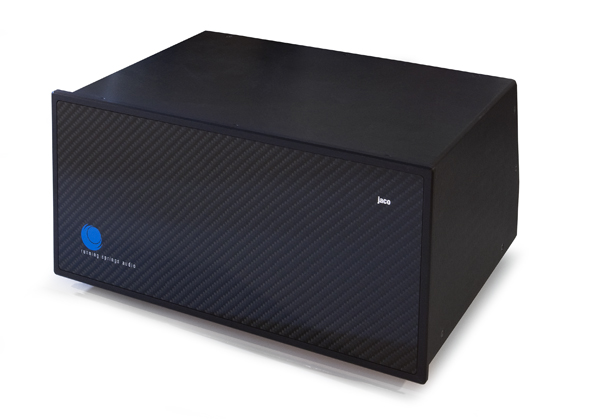 I’ve been using Running Springs power line conditioners with excellent luck for just over five years now and have upgraded my current reference system to their flagship products, the Dmitri (for all of my line level components) and the Maxim (for my power amplifier, on a separate 20 amp circuit), while the Haley that I purchased quite a few years ago is still working well in system two.
I’ve been using Running Springs power line conditioners with excellent luck for just over five years now and have upgraded my current reference system to their flagship products, the Dmitri (for all of my line level components) and the Maxim (for my power amplifier, on a separate 20 amp circuit), while the Haley that I purchased quite a few years ago is still working well in system two.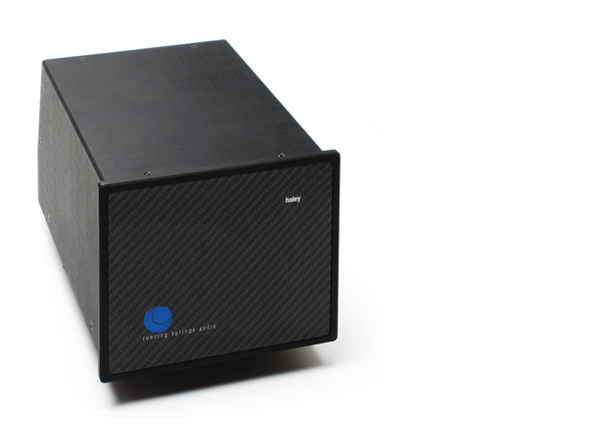 Definitely, a cost effective improvement
Definitely, a cost effective improvement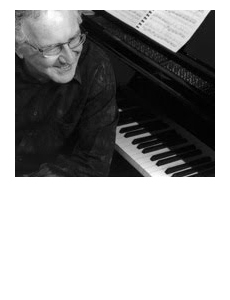 Starting this September 9, high end audio dealer Audio High in Mountain View, California has teamed up with pianist Robert Silverman to present an eight concert series of all 32 Beethoven piano sonatas. Audio High owner, Michael Silver said that the entire series of performances will be recorded and distributed as CD’s and high resolution digital files. All proceeds from the concerts (and recordings) will be donated to the Stanford Children’s Hospital.
Starting this September 9, high end audio dealer Audio High in Mountain View, California has teamed up with pianist Robert Silverman to present an eight concert series of all 32 Beethoven piano sonatas. Audio High owner, Michael Silver said that the entire series of performances will be recorded and distributed as CD’s and high resolution digital files. All proceeds from the concerts (and recordings) will be donated to the Stanford Children’s Hospital.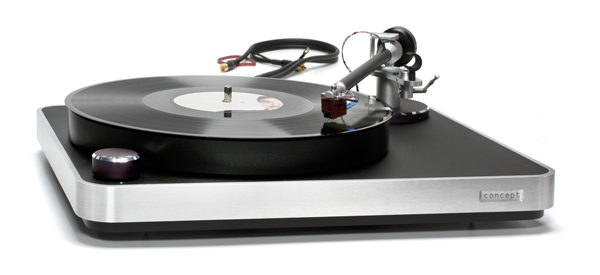 If you pose the question, “What turntable should I buy for $1,500?” on an internet forum, have your hazmat suit on and be prepared to be bombarded with insults and advice. You’ll get suggestions from all over the audio spectrum; new, used, and modded this or that. Of course, everyone knows what’s best for you and God forbid that you question any of the self-proclaimed experts should you choose not to take their advice.
If you pose the question, “What turntable should I buy for $1,500?” on an internet forum, have your hazmat suit on and be prepared to be bombarded with insults and advice. You’ll get suggestions from all over the audio spectrum; new, used, and modded this or that. Of course, everyone knows what’s best for you and God forbid that you question any of the self-proclaimed experts should you choose not to take their advice.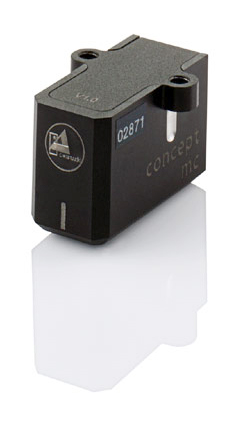 If you buy the Concept with one of the cartridge options, it will arrive with the cartridge installed and optimized at the factory, so all you will need to do is install the counterweight and set the tracking force. Be sure to hold the tonearm with one hand while installing the threaded counterweight, as it fits very snugly and could damage the arm otherwise.
If you buy the Concept with one of the cartridge options, it will arrive with the cartridge installed and optimized at the factory, so all you will need to do is install the counterweight and set the tracking force. Be sure to hold the tonearm with one hand while installing the threaded counterweight, as it fits very snugly and could damage the arm otherwise.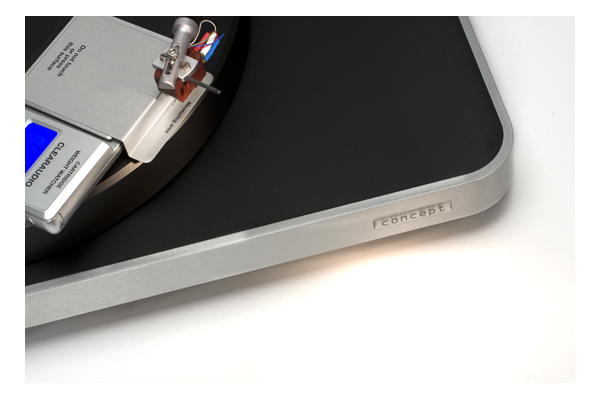 During a moment of temporary madness, the Maestro was swapped out for Clearaudio’s $5,500 DaVinci MC cartridge, a master of detail retrieval. Granted, the small but mighty Concept did not offer as big a presentation as it did when mounted to the Clearaudio Innovation we reviewed a while back, but it wasn’t bad. If you are a real vinyl fanatic, I don’t think this table would be out of it’s league with your favorite cartridge in the $1,000 – $2,000 range if you care to take it that far, so this is definitely a component you won’t easily outgrow.
During a moment of temporary madness, the Maestro was swapped out for Clearaudio’s $5,500 DaVinci MC cartridge, a master of detail retrieval. Granted, the small but mighty Concept did not offer as big a presentation as it did when mounted to the Clearaudio Innovation we reviewed a while back, but it wasn’t bad. If you are a real vinyl fanatic, I don’t think this table would be out of it’s league with your favorite cartridge in the $1,000 – $2,000 range if you care to take it that far, so this is definitely a component you won’t easily outgrow.